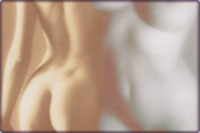Plastic surgery may turn patient into disfigured monster
Scheduling one’s plastic surgery is a real cakewalk these days. It all boils down to economics, by and large. However, the victims of meatball surgery are confident that a good plastic surgeon is hard to find no matter how much money one may be willing to spend on the improvement of one’s looks.

Below are some of the most common screw-ups caused by incompetent plastic surgery.
Operation: Rhinoplasty or nose perfection
Risks: Removing too much of the connective tissue (cartilage) or bone during rhinoplasty can lead to complications, which are extremely difficult to deal with once the operation has taken place. The case of the former pop idol Michael Jackson is a typical example of rhinoplasty that went wrong. Jackson had apparently dreamed of a finer feature gracing his face. Plastic surgeons performed several operations to make his dream come true. It is obvious they overdid it. The so-called bone callosity due to an increased rate of calcification often follows this kind of abuse.
Excising too much skin inside the nasal cavity and around the wings of the nose is yet another serious mistake, which can lead to labored nasal breathing and the formation of noticeable cicatrices.
Solution: Thinning of the septum of the nose can lead to a hole inside the nose. Well, the hole can be “filled in” using a variety of implants made of silicone or cartilage, which is normally removed from a patient’s ear. All the traces of the damage done by a previous operation will be gone provided a procedure is carried out with utmost caution.
It is a lot more difficult to get rid of scars. The point is that everyone is different, and therefore scarring runs a different course in each case. There is no such thing as a perfect method for removing scars. As a rule, scars are either excised by lasers or resolved by medications administered by injection.
Operation: Mammoplasty or breast augmentation
Risks: An artificial implant will always be a foreign body to a patient’s body, which may react by building a scar tissue around the implant. Consequently, the capsule around the breast will harden, making the breast feel stony by touch. Even the skilled surgeons can recall lots of cases involving the hardening of the capsule or leakage of the implant. Using textured implants can reduce the risk of contracture (hardening of the capsule).
Solution: In most cases, an implant should be removed and put back into the breast later. A new operation should be carried out after a minimum of 6 months’ break in case of capsulation. A two months’ wait should be enough for surgery in other cases.
Operation: Blepharoplasty or eyelid lift
Risks: Any operation aiming to repair or reconstruct the eyelid involves great care and effort. A patient will suffer from ectropion (turning out of the eyelid, away from the eyeball) if the skin is tied up too tightly on the lower lid. The lower lid droops; it cannot cover the eye properly. The mucous membrane will start drying out gradually – a condition known as a “dry eye” problem. Blepharoplasty on the upper lid can be risky as well. A patient may end up looking like a Popeye impersonator.
Solution: Transplantation can come in handy. A skin graft is used for patching up a damaged area of skin. A carefully planned action is a must for using this extremely delicate technique. An endoscopic facelift is performed on the middle section of the face to tackle the “goggle eyes” problem.
Operation: Liposuction of fat reduction
Risks: A surgical procedure for removing unwanted collections of subcutaneous fat is seemingly easy to perform. However, it can result in a number of complications. Removing too little fat is better than removing too much, by and large. The body can go into shock if too much fat and fluid is removed.
Solution: A technique called lipofilling is used for dealing with the consequences of a liposuction operation that went awry. A fat tissue graft is implanted to smooth off the dimpled or saggy skin from the buttocks, tummy, lower abdomen, thighs and arms.
Operation: Rhytidectomy or facelift
Risks: This type of plastic surgery is designed to tighten loose skin of the face and neck. However, inexperienced surgeons can often do damage to the facial nerve while performing an endoscopic facelift. In about a month’s time, a patient will experience difficulty opening or closing his eyes, he will also bare his front teeth all the time, and the corners of his mouth will be constantly turned up (the so-called “dog’s smile). An unsuccessful spherical facelift can cause lots of damage to a patient’s hairline. Alternatively, a patient will have to flash an ugly smile following damage to his facial nerve, which supplies the muscles of facial expression.
Solution: If a smaller nerve is affected during an operation, it is likely to heal by itself. To promote healing, a surgeon can recommend a variety of medicines or the use of physiotherapy and acupuncture.
Medportal
Translated by Guerman Grachev
Pravda.ru
Subscribe to Pravda.Ru Telegram channel, Facebook, RSS!




